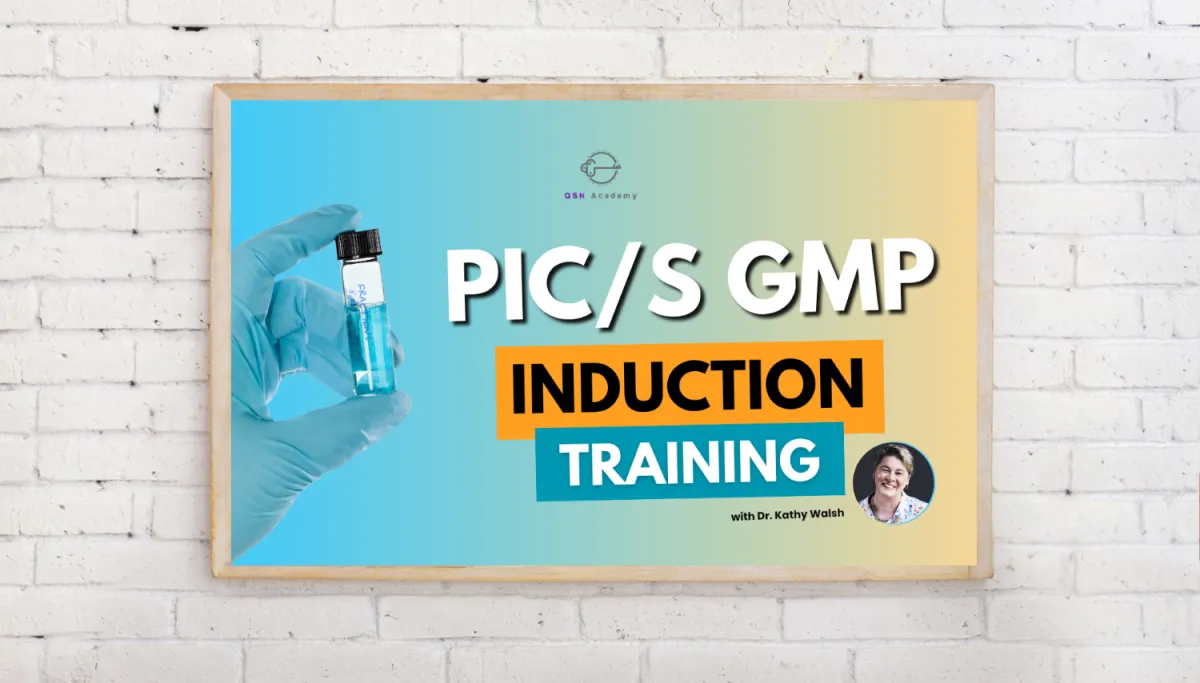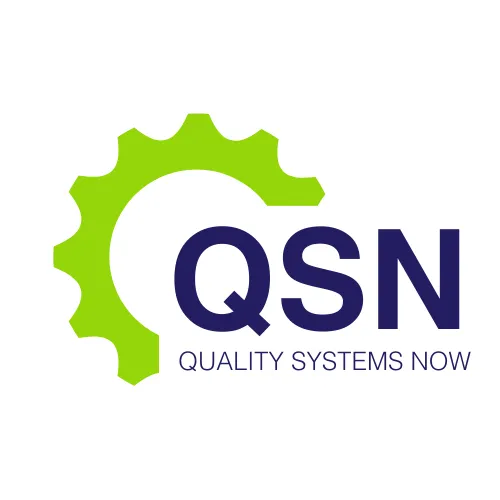NEWS

GMP Induction Training
Good Manufacturing Practice (GMP) is a cornerstone of product quality and patient safety. GMP Induction Training is the critical first step for new personnel entering this environment. For trainees beginning their careers in pharmaceutical manufacturing, this training ensures a foundational understanding of regulatory expectations, quality management principles, and best practices in documentation and compliance.
This article presents an overview of GMP Induction Training, structured in alignment with the course offered by Quality Systems Now (QSN), an expert provider of regulatory training for the therapeutic goods and biotechnology sectors. The course is designed to introduce new employees to the essential concepts of GMP, familiarise them with the PIC/S GMP Code, and ensure competence in Good Documentation Practices (GDocP). With a scientific and regulatory focus, the training builds knowledge that is immediately applicable in GMP-regulated facilities.
What Is GMP?
Good Manufacturing Practice (GMP) refers to the systems and procedures that ensure pharmaceutical products are consistently produced and controlled according to quality standards. These practices are internationally harmonised and enforced through local regulations. In Australia, GMP is regulated by the Therapeutic Goods Administration (TGA), which adopts the Pharmaceutical Inspection Co-operation Scheme (PIC/S) Guide to GMP as its formal standard.
GMP covers all aspects of production, from raw material sourcing and equipment validation to sanitation, recordkeeping, and personnel training. The overarching goal is to prevent contamination, mix-ups, deviations, and other errors that could compromise product quality or patient safety. Importantly, GMP is not optional. It is a legally enforceable set of requirements for all licensed manufacturers of medicines and certain biological and complementary products.
How Are Pharmaceuticals Regulated?
In Australia, therapeutic goods are regulated under the Therapeutic Goods Act 1989. The TGA is responsible for assessing the safety, efficacy, and quality of medicines, medical devices, and biologicals before they can be supplied. Manufacturers must be licensed by the TGA and are subject to routine GMP inspections. Non-compliance can result in fines, licence suspension, product recalls, or legal action.
Globally, other regulatory authorities such as the U.S. FDA, EMA (Europe), and PMDA (Japan) operate under similar frameworks. However, harmonisation efforts—particularly through PIC/S—have enabled a standardised approach to GMP compliance that facilitates mutual recognition and global trade.
What Is Quality Management?
Quality Management is the systematic coordination of activities to ensure that products meet defined quality standards and customer expectations. In the context of pharmaceutical manufacturing, it involves the implementation of a Pharmaceutical Quality System (PQS) that integrates GMP with risk management, continuous improvement, and regulatory compliance.
The PIC/S GMP Guide emphasises that quality cannot be tested into a product—it must be built in through controlled processes and preventive systems. Therefore, every person in a manufacturing organisation plays a role in quality, from operators and technicians to managers and senior leadership.
What Is PIC/S GMP and Where Can You Find the Regulations?
The Pharmaceutical Inspection Co-operation Scheme (PIC/S) is an international organisation that promotes harmonisation of GMP standards across member countries. Australia is a participating member, and the PIC/S Guide to GMP (specifically Part I, PE009-16) is adopted by the TGA.
The Guide can be freely downloaded from the PIC/S website and serves as the primary reference document for manufacturers. It provides detailed expectations across various functional areas, including premises, documentation, production, quality control, and personnel.
Who Is Responsible for Quality?
Responsibility for quality lies with everyone in the organisation, not just the Quality Assurance (QA) department. While QA may be tasked with oversight, documentation, and deviation management, all employees are accountable for performing their tasks according to approved procedures and reporting any issues that may affect product quality or compliance.
GMP culture demands vigilance, integrity, and accountability. This is why induction training is so vital: it equips new staff with the awareness and tools needed to participate in and uphold quality systems from day one.
Review of PIC/S GMP
A core component of the GMP Induction Training is the structured review of the PIC/S GMP Code, Part I (PE009-16). The training breaks down the following key chapters:
Chapter 1 – Pharmaceutical Quality System: Introduces the concept of a structured QMS and outlines senior management responsibilities.
Chapter 2 – Personnel: Defines the roles and training requirements of employees involved in GMP activities.
Chapter 3 – Premises and Equipment: Details design principles that prevent contamination and enable efficient cleaning and maintenance.
Chapter 4 – Documentation: Highlights the importance of accurate, complete, and timely documentation as proof of compliance.
Chapter 5 – Production: Sets expectations for validated processes, in-process controls, and segregation of materials.
Chapter 6 – Quality Control: Describes sampling, testing, and release procedures.
Chapter 7 – Outsourced Activities: Emphasises that responsibility for quality cannot be delegated, even if tasks are outsourced.
Chapter 8 – Complaints and Product Recall: Requires procedures for handling complaints and initiating recalls if needed.
Chapter 9 – Self-Inspection: Promotes internal audits to identify gaps and drive continuous improvement.
Throughout the training, each chapter is explained in terms of its application, practical examples, and relevance to real-world operations.
Good Documentation Practices
Good Documentation Practices (GDocP) are the foundation of GMP compliance. Documentation provides evidence that operations were conducted according to approved procedures and that all required quality checks were completed.
Key topics covered in the training include:
ALCOA+ Principles: Documentation must be Attributable, Legible, Contemporaneous, Original, Accurate, plus Complete, Consistent, Enduring, and Available.
Correcting Errors: The correct method for correcting entries in GMP records is also addressed. Trainees learn how to strike through errors with a single line, annotate corrections with reason, date, and initials, and avoid practices such as white-out or pencil use.
Record Retention: Emphasis is placed on secure storage and appropriate archiving of GMP records for traceability and audit purposes.
Electronic Records: As many systems are now digital, the training introduces basic concepts of data integrity and audit trails in electronic systems.
What Does the Course Include?
The QSN GMP Induction Training is designed for maximum flexibility and effectiveness. It includes:
Self-directed Online Training: Videos, readings, and an assessment that trainees can complete at their own pace. This content covers all foundational aspects of GMP, regulatory structures, the PIC/S Code, and documentation best practices.
Six-Month Access: Trainees have access to the online materials for six months, allowing them to revisit content as needed, especially before audits or evaluations.
Optional Premium Sessions: For organisations seeking deeper engagement, QSN offers live sessions via Zoom or onsite. Led by GMP expert Kathy, these sessions include case studies, Q&A, and applied learning.
Customisable Delivery: Whether online-only or blended with live training, the program is adapted to your facility’s schedule, staff roles, and operational needs.
Talk To Us Today to explore Induction Training Options
GMP Induction Training is not merely a formality. It is a scientifically and regulatorily essential process that prepares new personnel for the realities of pharmaceutical manufacturing. Through a structured curriculum aligned with PIC/S GMP, Quality Management principles, and GDocP, the training equips staff to operate confidently and compliantly in GMP environments.
Offered by QSN, this training is designed with flexibility, depth, and practical relevance. Whether as part of onboarding or as a refresher, it plays a vital role in maintaining a competent workforce and a robust quality culture. For pharmaceutical companies committed to excellence and compliance, GMP Induction Training is an investment in both regulatory success and long-term business performance.
